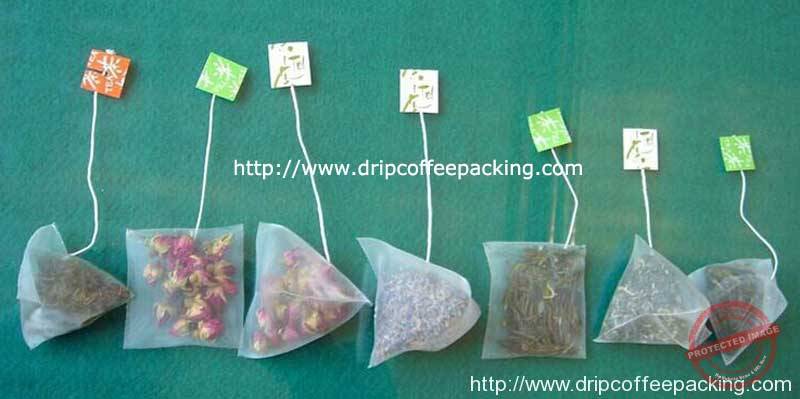Tea Bag Introduction
A tea bag is a small, porous, sealed bag containing dried plant material, which is immersed in boiling water to make a hot drink. Classically these are tea leaves (Camellia sinensis), but the term is also used for herbal teas (tisanes) made of herbs or spices. Tea bags are commonly made of filter paper or food-grade plastic, or occasionally of silk[citation needed]. The bag contains the tea leaves while the tea is steeped, making it easier to dispose of the leaves, and performs the same function as a tea infuser. Some tea bags have an attached piece of string with a paper label at the top that assists in removing the bag while also displaying the brand or variety of tea.
In countries where the use of loose tea leaves is more prevalent, the term “tea bag” is commonly used to describe paper or foil packaging for loose leaves. They are usually square or rectangular envelopes with the brand name, flavour and decorative patterns printed on them.
Tea bag shapes
Traditionally, tea bags have been square or rectangular in shape. More recently circular and tetrahedral bags have come on the market and are often claimed by their manufacturers to improve the quality of the brew.
Empty tea bags are also available for consumers to fill with tea leaves themselves. These are typically open-ended pouches with long flaps. The pouch is filled with an appropriate quantity of leaf tea and the flap is closed into the pouch to retain the tea. Such tea bags combine the ease of use of a commercially produced tea bag with the wider tea choice and better quality control of loose leaf tea.
The nylon tetrahedral tea bag containing larger tea leaf fragments made an appearance in the marketplace for aficionados. The tetrahedral shape allows more room for the leaf to steep. Environmentalists prefer silk to nylon because of health and biodegradability issues.[12] Another material for tea bags is Soilon, made from corn starch.[13]
Coffee bags
The concept of pre-measured portions to be infused in disposable bags has also been applied to coffee in the form of coffee bags, although this has not achieved such wide acceptance as tea bags.
Tea bag-related activities
Decorative tea bag labels have become the basis for large collections and many collectors collect tea bags from around the world.
Teabag folding began in the Netherlands and is often credited to Tiny van der Plas. It is a form of origami in which identical squares of patterned paper (cut from the front of tea bag wrappers) are folded, and then arranged in rosettes. These rosettes are usually used to decorate gift cards and it has become a popular craft in both the US and UK since 2000.
Read More: https://en.wikipedia.org/wiki/Tea_bag
Read More: Automatic Tea Bag Packing Machine


